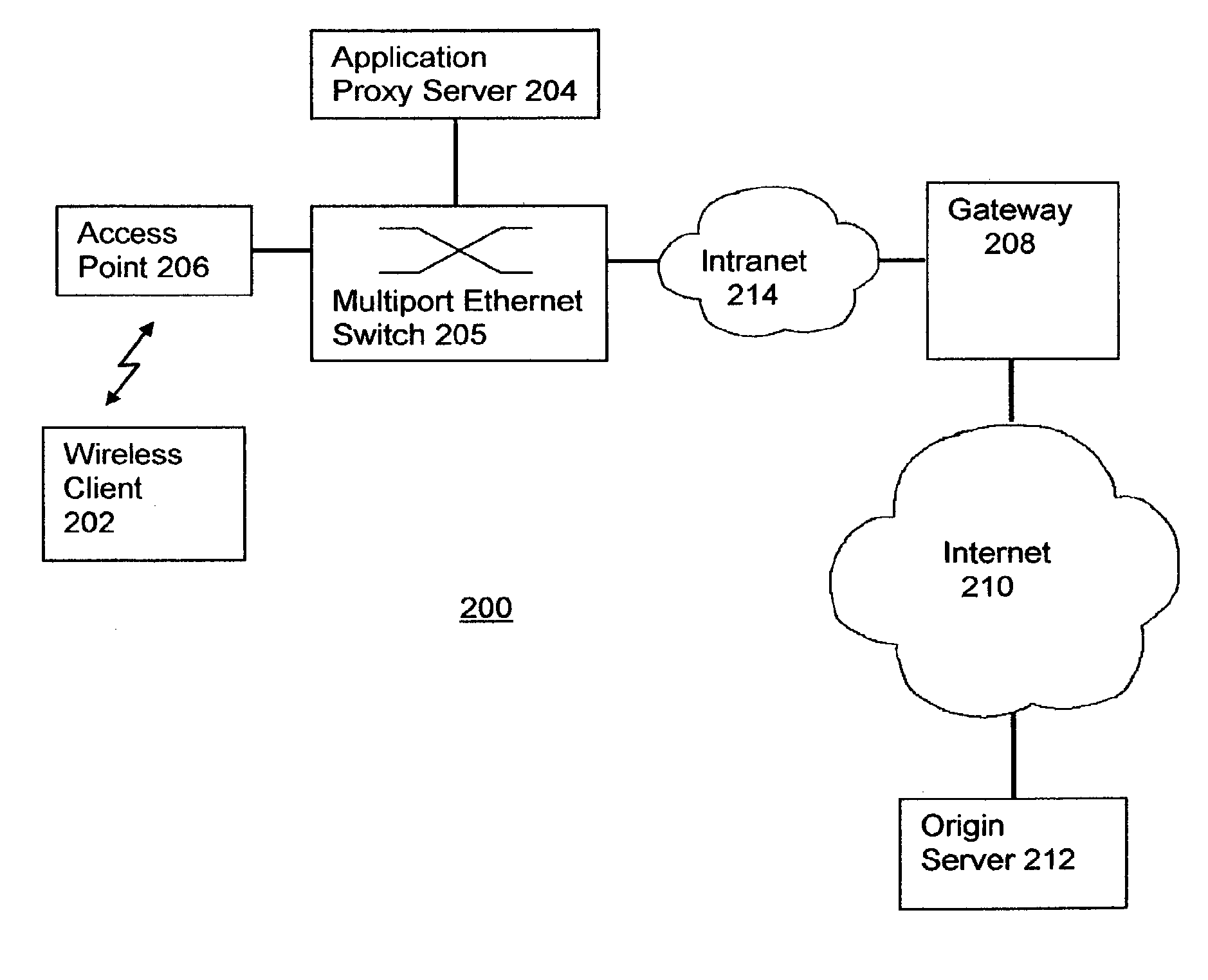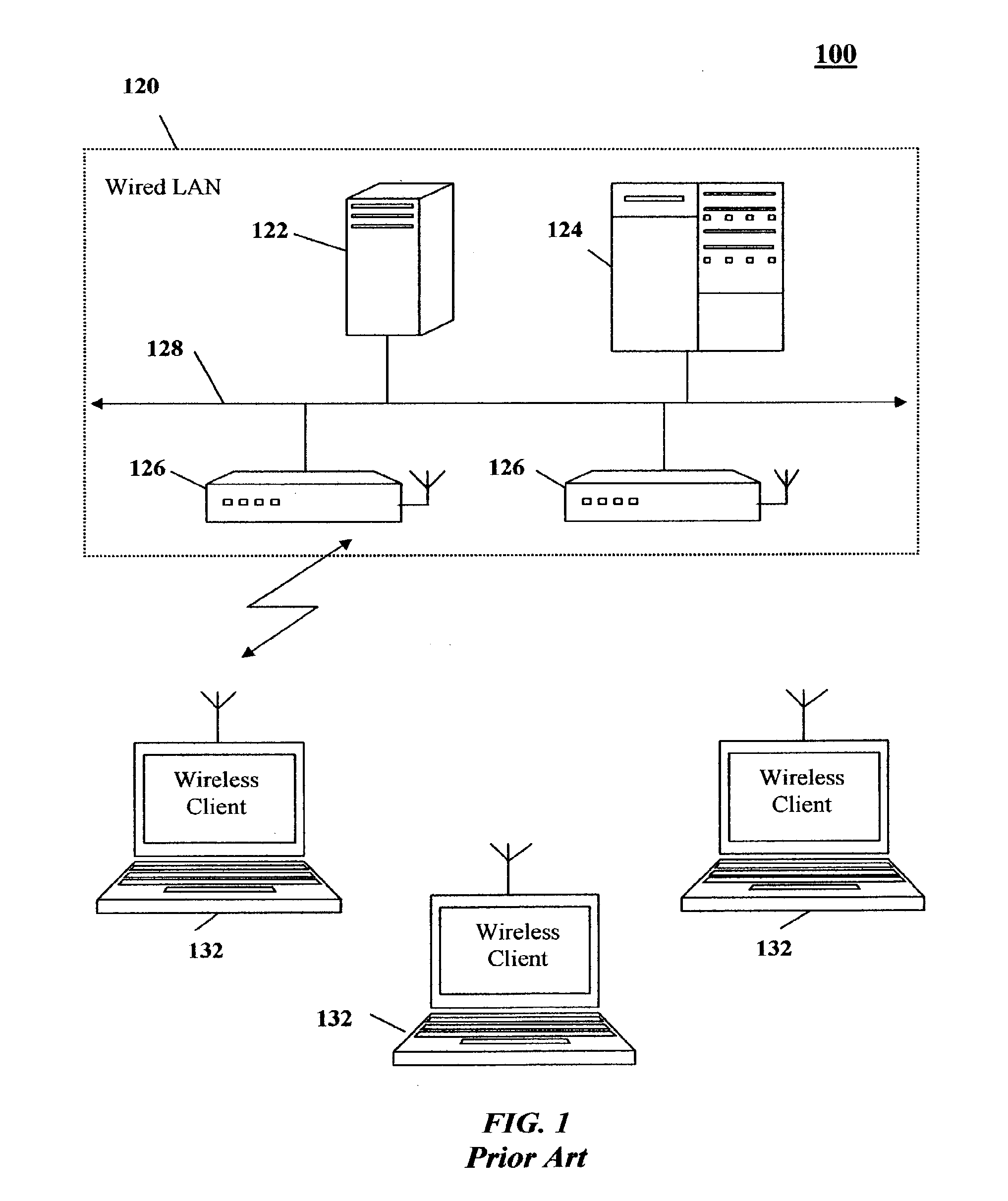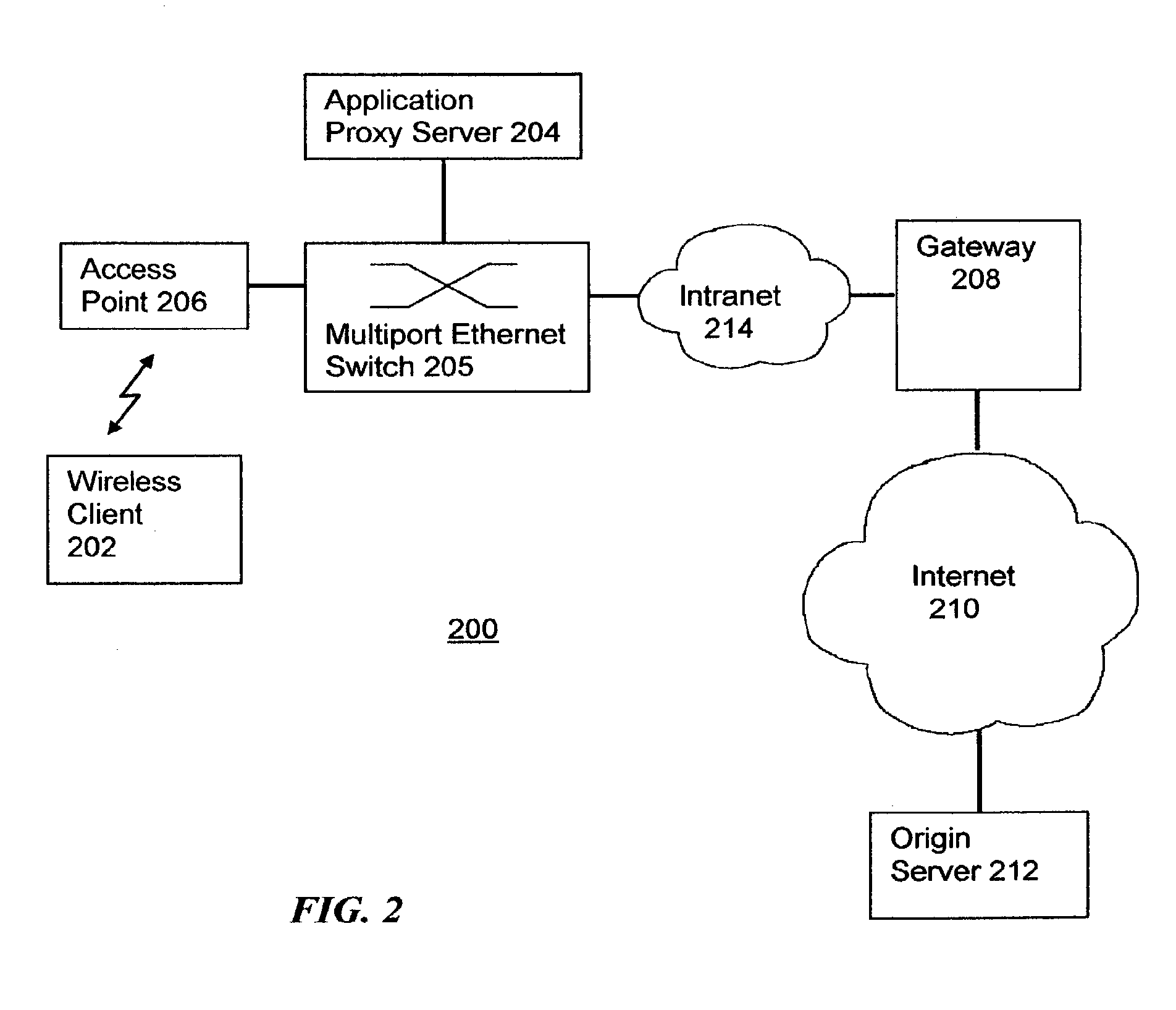System for low power operation of wireless LAN interfaces
a low-power operation and wireless lan interface technology, applied in the field of wireless local area network power management, can solve the problems of significantly reducing network throughput, reducing battery life, and power consumption of mobile stations (wireless units), so as to reduce the power consumption of mobile stations, promote energy saving, and reduce the effect of wasted power consumption
- Summary
- Abstract
- Description
- Claims
- Application Information
AI Technical Summary
Benefits of technology
Problems solved by technology
Method used
Image
Examples
Embodiment Construction
[0032] Referring to FIG. 2, there is shown a block diagram of a communication system or network 200 using a Proxy Server scheme, according to an embodiment of the invention. The system 200 comprises a plurality of wireless client units such as Wireless Client 202. These can be laptop computers, personal digital assistants or other wireless communication devices, wherein battery life is an important consideration. The Wireless Client 202 is connected to an Intranet 214 via an Access Point (AP) 206 that comprises a wireless transceiver for providing wireless communication with a Client 202. The AP 206 is often connected to the Intranet 214 through a Multiport Ethernet Switch 205 as shown in FIG. 2. According to the invention, an Application Proxy Server 204 is also connected to the Intranet 214 and to the AP 206 through the Multiport Ethernet Switch 205.
[0033] The Intranet 214 is connected to the Internet 210 via a Gateway 208. Also connected to the Internet 210 is a Server 212 (call...
PUM
 Login to View More
Login to View More Abstract
Description
Claims
Application Information
 Login to View More
Login to View More - R&D
- Intellectual Property
- Life Sciences
- Materials
- Tech Scout
- Unparalleled Data Quality
- Higher Quality Content
- 60% Fewer Hallucinations
Browse by: Latest US Patents, China's latest patents, Technical Efficacy Thesaurus, Application Domain, Technology Topic, Popular Technical Reports.
© 2025 PatSnap. All rights reserved.Legal|Privacy policy|Modern Slavery Act Transparency Statement|Sitemap|About US| Contact US: help@patsnap.com



